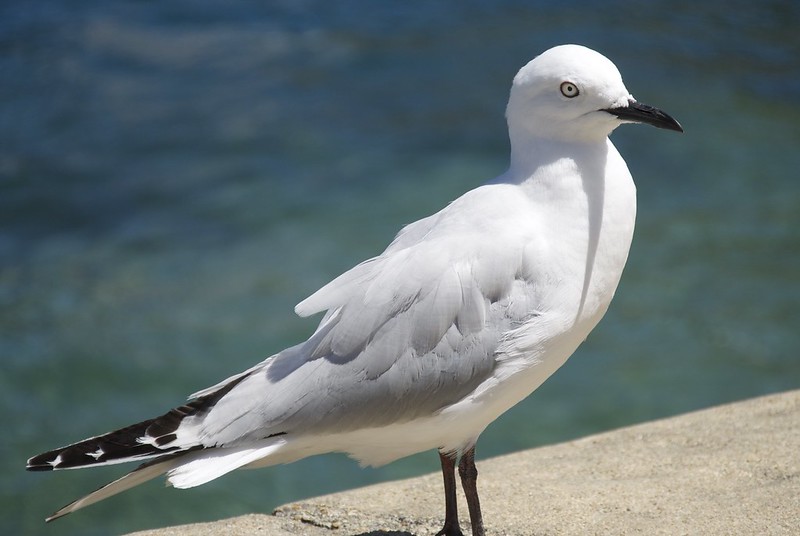Over 200 bird species call NZ home, with the majority found nowhere else in the world. Unfortunately, 74% are classified as threatened with or at risk of extinction due to human activity, mammalian pests and invasive plants that have caused habitat loss and population decline.
Some of our native birds seasonally migrate to inland Otago for breeding and have been documented along Lake Dunstan.
Invasive plant and pest control, seasonal restrictions on vehicles and dogs access and public support are some of the ways we can promote population recovery.
Below you can find a list of some of the most vulnerable birds found breeding along Lake Dunstan and how to help protect them during the breeding season (September to January).
If you spot one, please log it on eBird HERE
Some of our native birds seasonally migrate to inland Otago for breeding and have been documented along Lake Dunstan.
Invasive plant and pest control, seasonal restrictions on vehicles and dogs access and public support are some of the ways we can promote population recovery.
Below you can find a list of some of the most vulnerable birds found breeding along Lake Dunstan and how to help protect them during the breeding season (September to January).
If you spot one, please log it on eBird HERE
Banded Dotterel
Charadrius bicinctus
Nationally Vulnerable - less than 50,000
|
Appearance
Brown and white with long dark legs, short black bill and large round dark eyes. Breeding males: Breasts bands - narrow black and broad chestnut; black band between eyes. Females: paler more chestnut-coloured breasts than males. Distribution Widespread on mainland NZ during the breeding season. Breed on braided rivers, occasionally on the gravelly lakeshore. Can be found migrating to Tasmania and S.E Australia for winter. Breeding Arrive in July; eggs are laid from August to November. Usually, 3 eggs which are grey to pale green and speckled; resemble stones. Nests are shallow scrapes in gravel or soil and lined with small stones. Pairs are solitary and territorial. Both parents incubate for 4 weeks then care for a further 5-6 weeks once fledged. Threats Mammalian predators, habitat loss, dogs and distribution by human activity (e.g. vehicles). |
|
Australasian Crested Grebe
Podiceps cristatus
Nationally Vulnerable - less than 3,000
|
Appearance
Medium-sized with a slender, long neck, narrow black bill and head with a distinctive black crest and chestnut-black cheek frills. Body dark chestnut-brown and silver-white underneath. Feet lobed and set far back on the body. Distribution South Island; common in Canterbury and Otago. Now rare in Nelson, Marlborough, West Coast and Fiordland. Nest on lakes with shoreline rushes, sedges, reeds or willows. Breeding Nesting September to March. Build floating nests from sticks and aquatic weeds and anchor them to willow branches or reeds. Lay 5-7 eggs and both parents incubate and care for the chicks who often sit on the parent's back. Threats Mammalian predators, habitat loss, hydroelectric power schemes and disturbance by recreational activities (e.g. power boats). |
|
Black Billed Gulls
Larus bulleri
Nationally Critical- less than 60,000
|
Appearance
More slender than red-billed gulls; with a longer bill. Breeding adults are mostly white with pale silver-grey wings and back. Outer primaries have white-tipped black margins. Black beak and legs. The eye is white with a red eye-ring. Distribution Most nest in South Island. Breed on sparsely-vegetated gravels of inland riverbeds; occasionally on adjacent farmland if been major flooding. After breeding, they migrate to the coast but this is poorly monitored. Breeding Colonies are established from October until January; earlier if there is flooding, predation or disturbance. 2-4 eggs and incubate 20-24 days; chicks fledge at 26± days. Threats Mammalian and avian predators, weed encroachment, agriculture, flooding, vehicle activity on nesting sites, climate change. |
Help protect our Native Birds
|
Visiting parks, beaches, rivers & lakes
|
When out with your dog
|
Other ways to help
|
Call 0800 DOC HOT (0800 362 468) immediately if you see anyone catching, harming or killing native wildlife
Download
Learn about the incredible native birds breeding along Lake Dunstan and how you can help protect them.
| ||||||||
References
- Pierce, R.J. 2013. Banded dotterel. In Miskelly, C.M. (ed.) New Zealand Birds Online. www.nzbirdsonline.org.nz
- O’Donnell, C.F.J. 2013 [updated 2017]. Australasian crested grebe. In Miskelly, C.M. (ed.) New Zealand Birds Online. www.nzbirdsonline.org.nz
- McClellan, R.K.; Habraken, A. 2013 [updated 2019]. Black-billed gull. In Miskelly, C.M. (ed.) New Zealand Birds Online. www.nzbirdsonline.org.nz


